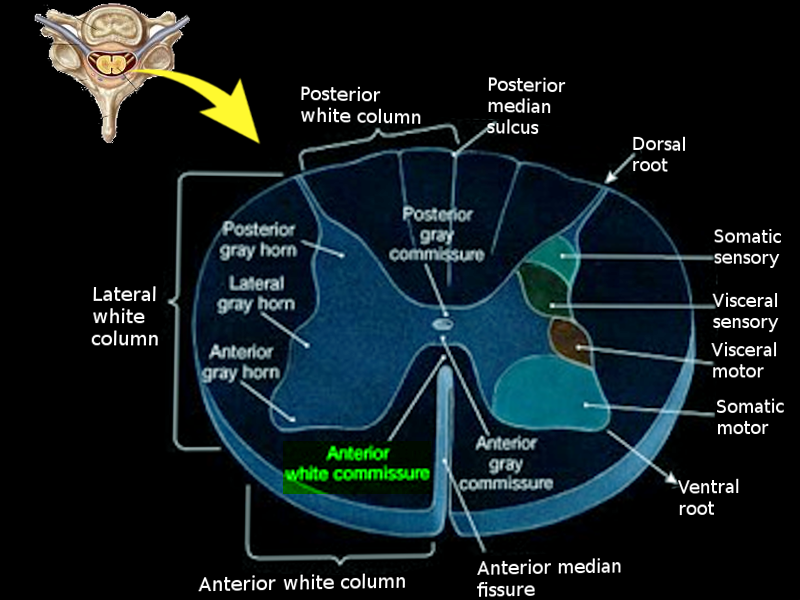[3]
Butler SJ, Bronner ME. From classical to current: analyzing peripheral nervous system and spinal cord lineage and fate. Developmental biology. 2015 Feb 15:398(2):135-46. doi: 10.1016/j.ydbio.2014.09.033. Epub 2014 Oct 24
[PubMed PMID: 25446276]
[4]
O'Rahilly R, Müller F. Significant features in the early prenatal development of the human brain. Annals of anatomy = Anatomischer Anzeiger : official organ of the Anatomische Gesellschaft. 2008:190(2):105-18. doi: 10.1016/j.aanat.2008.01.001. Epub 2008 Jan 29
[PubMed PMID: 18356030]
[6]
Dommisse GF. The blood supply of the spinal cord. A critical vascular zone in spinal surgery. The Journal of bone and joint surgery. British volume. 1974 May:56(2):225-35
[PubMed PMID: 4854669]
[7]
Nathan PW, Smith MC, Deacon P. The corticospinal tracts in man. Course and location of fibres at different segmental levels. Brain : a journal of neurology. 1990 Apr:113 ( Pt 2)():303-24
[PubMed PMID: 2328407]
[8]
Jin ZW, Cho KH, Jang HS, Abe H, Murakami G, Rodriguez-Vazquez JF. Anterior Corticospinal Tract Revisited: A Study Using Human Fetuses. Pediatric neurosurgery. 2016:51(3):121-6. doi: 10.1159/000442421. Epub 2016 Feb 13
[PubMed PMID: 26870953]
[9]
Viswanathan A, Burton AW, Rekito A, McCutcheon IE. Commissural myelotomy in the treatment of intractable visceral pain: technique and outcomes. Stereotactic and functional neurosurgery. 2010:88(6):374-82. doi: 10.1159/000319041. Epub 2010 Oct 15
[PubMed PMID: 20948242]
[10]
Hong D, Andrén-Sandberg A. Punctate midline myelotomy: a minimally invasive procedure for the treatment of pain in inextirpable abdominal and pelvic cancer. Journal of pain and symptom management. 2007 Jan:33(1):99-109
[PubMed PMID: 17196911]
[11]
Nowak DD, Lee JK, Gelb DE, Poelstra KA, Ludwig SC. Central cord syndrome. The Journal of the American Academy of Orthopaedic Surgeons. 2009 Dec:17(12):756-65
[PubMed PMID: 19948700]
[12]
Aito S, D'Andrea M, Werhagen L, Farsetti L, Cappelli S, Bandini B, Di Donna V. Neurological and functional outcome in traumatic central cord syndrome. Spinal cord. 2007 Apr:45(4):292-7
[PubMed PMID: 16773038]
[13]
van Meer N, Houtman AC, Van Schuerbeek P, Vanderhasselt T, Milleret C, Ten Tusscher MP. Interhemispheric Connections between the Primary Visual Cortical Areas via the Anterior Commissure in Human Callosal Agenesis. Frontiers in systems neuroscience. 2016:10():101. doi: 10.3389/fnsys.2016.00101. Epub 2016 Dec 26
[PubMed PMID: 28082873]

